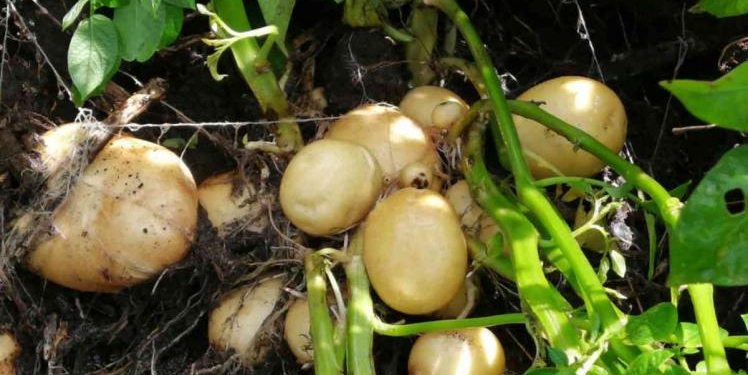Costa Rican farmers have a new potato variety, dubbed “Palmira”, which has optimal characteristics for the market
This was announced by agriculture and livestock minister Renato Alvarado on Wednesday in conjunction with agricultural hierarchies through a facebook account broadcast by the ministry.
The tuber was developed thanks to the coordinated work for six years by the National Institute of Innovation in Agricultural Technology (INTA), in coordination with the Ministry of Agriculture and Livestock (MAG), the National Seed Office (ONS) and the Foundation for the Promotion and Promotion of Agricultural Technology Research and Transfer of Costa Rica (FITTACORI).
The clone of this material arrived in the country in 2011, coming from the International Potato Center (CIP), located in Lima, Peru, as part of a collection of 37 materials, with tolerance to high temperatures. It was then tested differently by INTA to finally release the cultivar “Palmira”.
Arturo Solórzano, director of INTA, explained that in Costa Rica the variety has responded very well. “It has stable yields, both in dry and rainy season, producing almost 33 tons per hectare, equivalent to 700 or 1000 grams per plant,” he said.
He added that the product adapts very well to dry and hot weather conditions. “Its shape is rounded, white-cream shell and cream-colored pulp and because it has less water content, it is particularly special for the industry,” the researcher said.
“This new material is made available to the paper sector, after several years of research and testing carried out by INTA professionals, with the support of the MAG and several entities, in order to contribute and improve the competitiveness of a sector that generates economy in many rural communities,” Minister Alvarado Rivera said.
Research. The first validation plots made in our country, with the participation of producers, were carried out in 2017 in the town of Palmira, canton of Zarcero, — one of the main districts of the Western Central Region dedicated to potato cultivation–.
And this year, the largest commercial production of the clone was made in that same locality, so it was named after him.
In addition, the research and validation activities of the clone were carried out in other localities of the country such as Zarcero (Palmira, Pueblo Nuevo, Guadalupe, Las Brisas, Tapezco, San Luis) and Carthage (Tierra Blanca, Potrero Cerrado, El Pisco Prusia, Pacayas, Llano Grande, Los Pinos, Volcán Irazú, La Pastora, Guarumos, Volcán Turrialba, El Quijongo)
Jorge Mora, in charge of the research, stated that the new tuber already has the respective certification authorizing the marketing of the seed, by the National Seed Office and is already available to interested persons.
“It is not prone to overturning, highly resistant to late blyze (Phytophthora infestans), to problems of the mining fly (Liriomyza sp.) and has high resistance to the Y virus. In addition, it shows good tuber health and is less affected by Rhizoctonia sp. compared to commercial materials such as Granola and Floresta,” he added.
Deputy Minister Renato Alvarado, Deputy Minister Marlon Monge, INTA Director Arturo Solórzano, FITTACORI President Oscar Bonilla, ONS Executive Director Tania López and INTA specialist Jorge Mora, who was in charge of this investigation, participated in the release of this new strain.
As Palmira is a variety released by INTA, it is free to use, and is available to all producers who so desire. People interested in obtaining this variety for commercial production can contact the phone 2530-1224, of the Carlos Durán Experimental Station in Potrero Cerrado, Carthage.
PALMIRA VARIETY FEATURES
- Erect growth habit, high cost: 80 cm to flowering.
- Tuber color: White – cream.
- Color of the pulp: Cream.
- Production yield: 700 to 1000 grams per plant.
- Adaptation of zones: Means to High (1800 to 3000 m.snm).
- Late blyze resistance (Phytophthora infestans): High.
- Resistance to hollow stem or black foot (Pectobacterium sp.): Medium.
- Mining fly resistance (Liriomyza sp.): High.
- Y virus resistance: High.
- Tuber health: Good.
- Percentage of solids: 21%.
- Uses: It is mainly used for culinary art (table consumption). However, in different areas it has manifested percentages of solids above 21%, so it can be indicated that this material is suitable for industry, mainly those tubers harvested from plantations that are in the range of 1800 to 2300 m.s.n.m.









